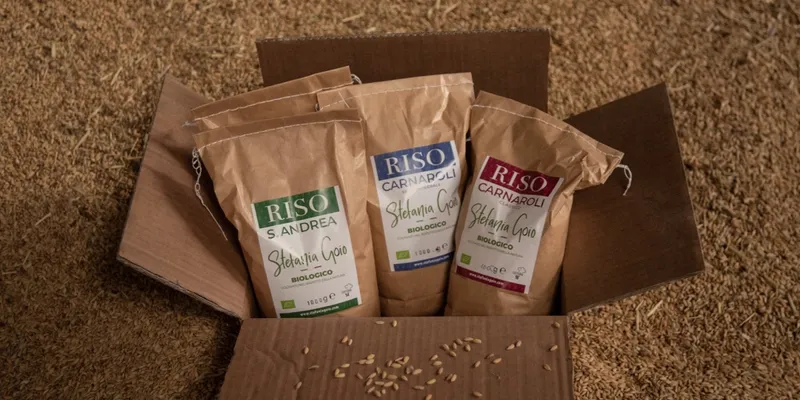Crowd Farming and investing in Walnuts?
Crowd Farming?
Last Christmas I received a gift of 5kg of rice. Well... got and got... I got to get in the future! (does that make sense?) It was crowd-farming. I got a piece of paper saying that in X number of months I will get 5kg of rice delivered to my door.
Crowd-farming is based on first buying the products and then having them delivered after the harvest. Consumers can often follow the production during the season through updates and pictures from the farmer. Once the harvest is complete, the products are distributed to consumers.
For farmers, crowd-farming is an opportunity to obtain financing in advance, thereby reducing the risk of losses. This allows farmers to invest in better equipment and technology and to develop more sustainable farming practices. By having a more secure and stable income, farmers can also focus on growing high-quality crops instead of having to squeeze prices to survive in the market.
Benefits for consumers include increased awareness of where food comes from, support for small-scale farmers, and reduced food waste through predetermined quantities to be produced. In addition, consumers can access fresh and high quality food from local sources.
Investeringsmöjligheter?
This in itself pushed my thoughts into alternative investment opportunities and I got in touch with The Walnut Fund.
The Walnut Fund is an alternative investment fund that invests in walnut farms around the world and trades directly from them. Investors get the opportunity to benefit from the long-term growth potential of walnut plantations and the longevity of walnut trees.
The fund invests in walnut plantations in various locations around the world that are carefully selected and monitored to ensure the highest possible return and security for investors. The fund then buys and operates the walnut plantations, with the goal of maximizing returns for investors.
Investors in typically receive an annual dividend, which is based on the fund's total profit during the year and is estimated at an annual dividend of around 30-50% after the trees mature.
My short take on it all::
Good environmentally friendly investment with overall low risk. The disadvantage is that it takes a while before the trees are mature and give a dividend and that the dividend is not increasing and is thus eaten up by inflation over time.
Below is a slightly more developed take for those who want to read on.
Detailed take:
The Walnut Fund has divided the period into 4 different periods.
- Planting (year 1)
- Growing up (years 2-3)
- ROI = Return of investment (years 4-7)
- The Golden Years (ages 7+)

As we can see in the graph above, we will never beat the stock market index with the expected return. This is simply due to the time it takes for the trees to start yielding. You start with -20,000 instead of the share value of +20,000.
Having said that, it would hit quite hard if the stock market were to go backwards in the first few years. Then The Walnut Fund catches up for a period. (if you want graphs on it, you can shout and I will produce it).
"The return on investment (ROI) period is between 6 and 8 years. By year seven (/) we estimate that you will have 100-110% of what you have invested. With current market conditions every following year you can expect an additional 30-50% return on investment."
If we instead throw in the optimistic yield calculation (blue curve), it is quite quick to swing past the stock market. The hard hit with over 50% in dividends, even if that curve is linear. Some indications that in the years after 50 which we can see at the far end of the X-axis, the share value should exceed.
Note that
- No valuations or calculations on inflation have been included. As it is the same time period for both, it should not make a very big difference to the final result.
- Tax-wise, I don't know how it is managed. I would assume that it can be equated with lending, for example, via P2P investments.
Risks?
Benefits?
- Diversification towards the stock market.
- Environmentally oriented investment
- Stable dividend
- Generally low risks (as far as I can discern)
- Low risk of wastage due to long shelf life.
- Low bet, from €200
- Alternative to Preference shares?
Disadvantages?
- A bit of unknown ground with planning (for me anyway)
- Distance to market. It's not exactly H&M around the corner.
- Long time to dividend
- Few repayment possibilities and you become a little unlocked. However, there are certainly opportunities and secondary markets for this.
- Relatively new type of investment, there is limited historical data.











Leave a Comment